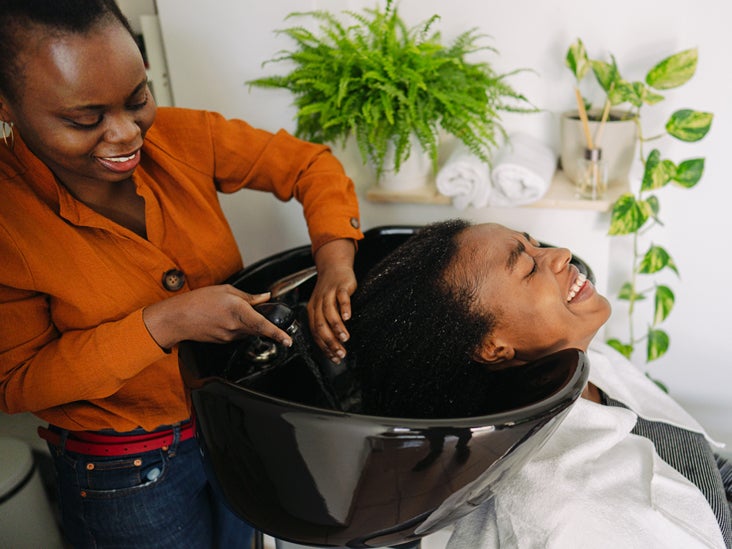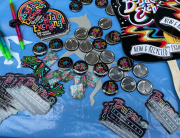Dandruff
Cosmetic companies have developed shampoos specifically for those who have dandruff. These contain fungicides such as ketoconazole, zinc pyrithione and selenium disulfide, which reduce loose dander by killing fungi like Malassezia furfur. Coal tar and salicylate derivatives are often used as well. Alternatives to medicated shampoos are available for people who wish to avoid synthetic fungicides. Such shampoos often use tea tree oil, essential oils or herbal extracts.
Colored Hair
Many companies have also developed color-protection shampoos suitable for colored hair; some of these shampoos contain gentle cleansers according to their manufacturers.
Baby Shampoo
Shampoo for infants and young children is formulated so that it is less irritating and usually less prone to produce a stinging or burning sensation if it were to get into the eyes. For example, Johnson’s Baby Shampoo advertises under the premise of “No More Tears”. This is accomplished by one or more of the following formulation strategies.
- Dilution, in case the product comes in contact with eyes after running off the top of the head with minimal further dilution
- Adjusting pH to that of non-stress tears, approximately 7, which may be a higher pH than that of shampoos which are pH adjusted for skin or hair effects, and lower than that of shampoo made of soap
- Use of surfactants which, alone or in combination, are less irritating than those used in other shampoos
- Use of nonionic surfactants of the form of polyethoxylated synthetic glycolipids and polyethoxylated synthetic monoglycerides, which counteract the eye sting of other surfactants without producing the anesthetizing effect of alkyl polyethoxylates or alkylphenol polyethoxylates
Sulfate-Free Shampoos
Sulfate-free shampoos are composed of natural ingredients and free from both sodium lauryl sulfate and sodium Laureth sulfate. These shampoos use alternative surfactants to cleanse the hair.
Solid Shampoo Bars
Solid shampoos or shampoo bars can either be soap-based or use other plant-based surfactants, such as sodium isethionate or sodium coco-sulfate combined with oils and waxes. Soap-based shampoo bars are high in pH (alkaline) compared to human hair and scalps, which are slightly acidic. Alkaline pH increases the friction of the hair fibers which may cause damage to the hair cuticle, making it feel rough and drying out the scalp.
Jelly And Gel
Stiff, non-pourable clear gels to be squeezed from a tube were once popular forms of shampoo, and can be produced by increasing a shampoo’s viscosity. This type of shampoo cannot be spilled, but unlike a solid, it can still be lost down the drain by sliding off wet skin or hair.
Paste And Cream
Shampoos in the form of pastes or creams were formerly marketed in jars or tubes. The contents were wet but not completely dissolved. They would apply faster than solids and dissolve quickly.
Antibacterial
Antibacterial shampoos are often used in veterinary medicine for various conditions, as well as in humans before some surgical procedures.
Photo Credits: Aleksandar Nakic







Add Comment